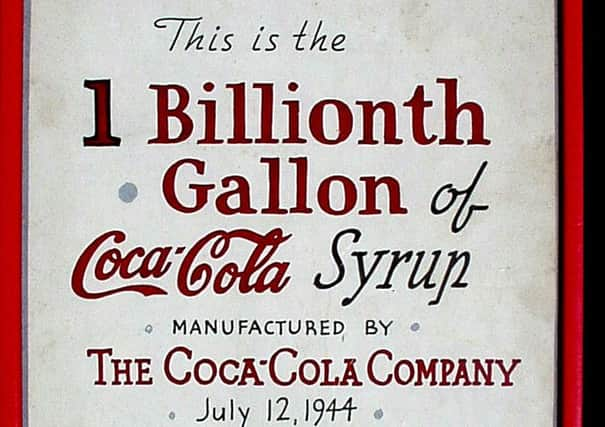Rarity and condition of Coca-Cola advertising is key to its value


The name comes from the ingredients originally used to make the drink; coca leaves and kola nuts. Frank Robinson, the Pemberton’s bookkeeper was actually the one who created both the name and the very distinctive Coca-Cola logo, which was in fact simply his own handwriting. He was also responsible for publicising the drink as a medicinal ‘pick me up’. Coca leaves, which were also used to make the drug cocaine, were eventually replaced in the early 1920s by caffeine.
Coca-Cola was first officially advertised in a magazine in 1902 and other merchandise quickly followed such as glasses and trays. The Coca-Cola image changed slightly during the 1920s and 1930s, alongside the ingredients, to become more family-inclusive, focusing on group enjoyment. The most well-known product of this, of course, is the famous Santa Claus images. The winter wonderland Santa Claus was developed by Swedish artist, Haddon Sundblom in the early 1930s to match the patented red of the Coca-Cola cans and is still an image synonymous with the Coca-Cola we love today.
Advertisement
Hide AdAdvertisement
Hide AdThe value of most Coca-Cola advertising is calculated the same as most collectables; rarity and condition are generally most important and realise the highest prices. Items from the late 1880s and 1890s, before official advertising from the company, are difficult to find these days making them highly sought after as are unusual items.